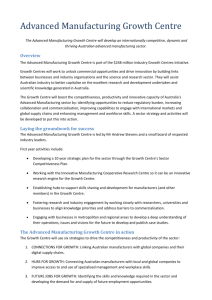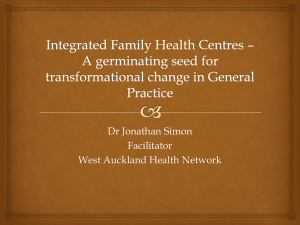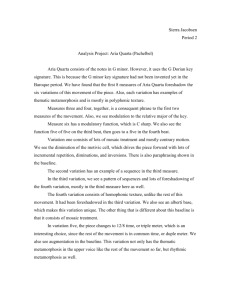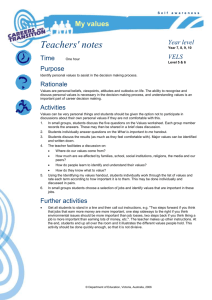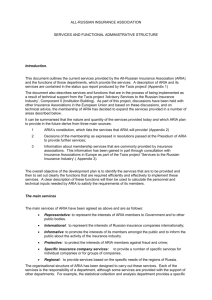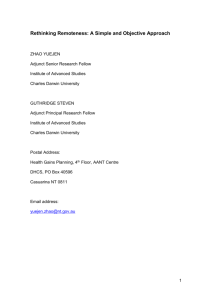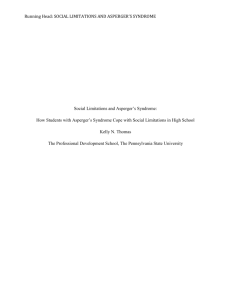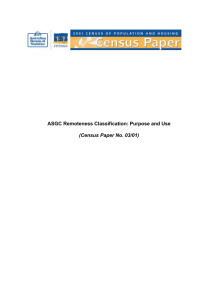Cost Adjustor - Remoteness (DOCX, 17.6 KB, 1 p.)
advertisement
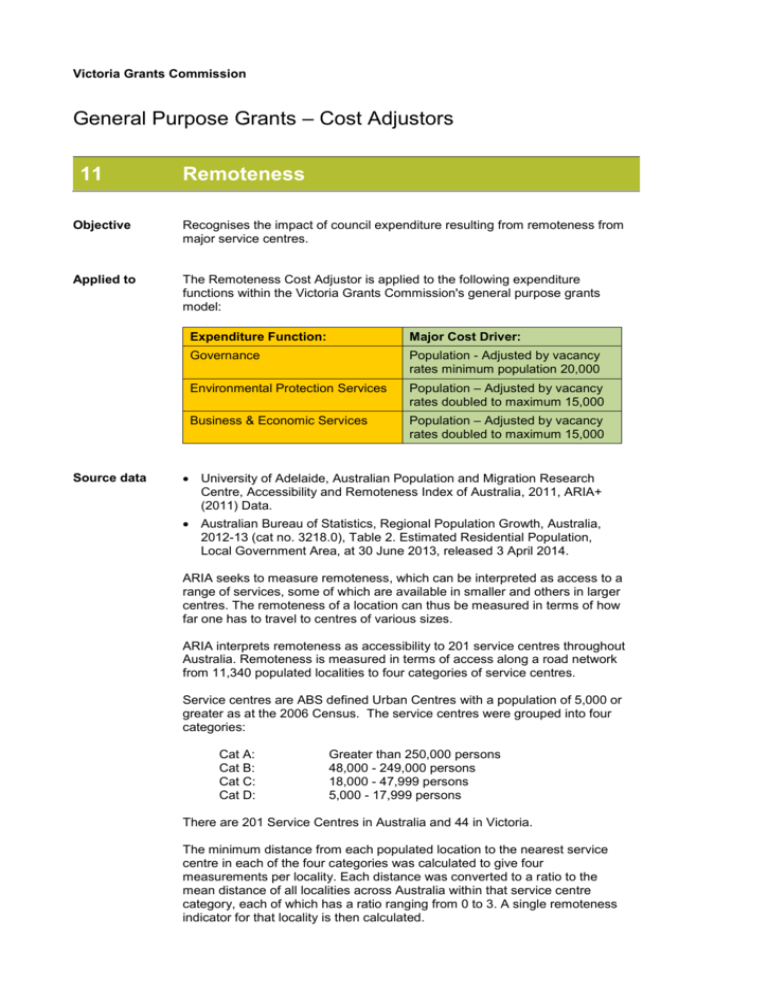
Victoria Grants Commission General Purpose Grants – Cost Adjustors 11 Remoteness Objective Recognises the impact of council expenditure resulting from remoteness from major service centres. Applied to The Remoteness Cost Adjustor is applied to the following expenditure functions within the Victoria Grants Commission's general purpose grants model: Source data Expenditure Function: Major Cost Driver: Governance Population - Adjusted by vacancy rates minimum population 20,000 Environmental Protection Services Population – Adjusted by vacancy rates doubled to maximum 15,000 Business & Economic Services Population – Adjusted by vacancy rates doubled to maximum 15,000 University of Adelaide, Australian Population and Migration Research Centre, Accessibility and Remoteness Index of Australia, 2011, ARIA+ (2011) Data. Australian Bureau of Statistics, Regional Population Growth, Australia, 2012-13 (cat no. 3218.0), Table 2. Estimated Residential Population, Local Government Area, at 30 June 2013, released 3 April 2014. ARIA seeks to measure remoteness, which can be interpreted as access to a range of services, some of which are available in smaller and others in larger centres. The remoteness of a location can thus be measured in terms of how far one has to travel to centres of various sizes. ARIA interprets remoteness as accessibility to 201 service centres throughout Australia. Remoteness is measured in terms of access along a road network from 11,340 populated localities to four categories of service centres. Service centres are ABS defined Urban Centres with a population of 5,000 or greater as at the 2006 Census. The service centres were grouped into four categories: Cat A: Cat B: Cat C: Cat D: Greater than 250,000 persons 48,000 - 249,000 persons 18,000 - 47,999 persons 5,000 - 17,999 persons There are 201 Service Centres in Australia and 44 in Victoria. The minimum distance from each populated location to the nearest service centre in each of the four categories was calculated to give four measurements per locality. Each distance was converted to a ratio to the mean distance of all localities across Australia within that service centre category, each of which has a ratio ranging from 0 to 3. A single remoteness indicator for that locality is then calculated. Thus an ARIA score was obtained for each of the 11,340 localities across Australia. This was then interpolated on to a 1 kilometre grid so that ARIA values could be obtained for various graphical areas. Categories of Remoteness Highly Accessible Accessible Moderately Accessible Remote Very Remote Aria Score Ranges 0 - 1.84 1.84 - 3.51 3.51 - 5.80 5.80 - 9.08 9.08 - 12 GISCA remains the source compilation of the spatial data. They use Geographical Information System (GIS) network analysis to calculate actual distance travelled by road from localities to service centres. Note that as ARIA is a national index the categories of Remote and Very Remote do not apply in Victoria. The ARIA range for Victoria is 0 - 5.8. Index Construction The Victoria Grants Commission has derived an index by taking an average of the ARIA indices for the Statistical Local Areas (SLAs) to obtain an ARIA index for the Local Government Areas (LGAs). The LGA ARIA index has a range of between 0 - 4.66. This index is then converted to a range between 1.00 to 2.00 and which becomes the "Primary Index". A state average of the Primary Index is obtained by weighting each council's Primary Index by its estimated population as at June 2011 (using double population up to a maximum of 15,000 people for small councils). The Cost Adjustment Index (CAI) is the ratio of each council's Primary Index to the state average. Councils with a CAI above the state-wide average are assessed as having relatively higher expenditure needs than councils with a CAI below the state average.
